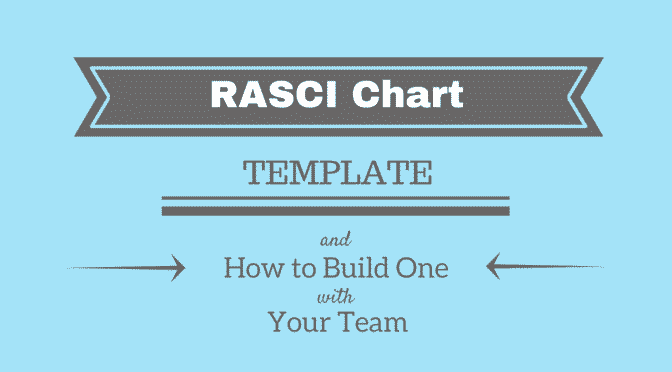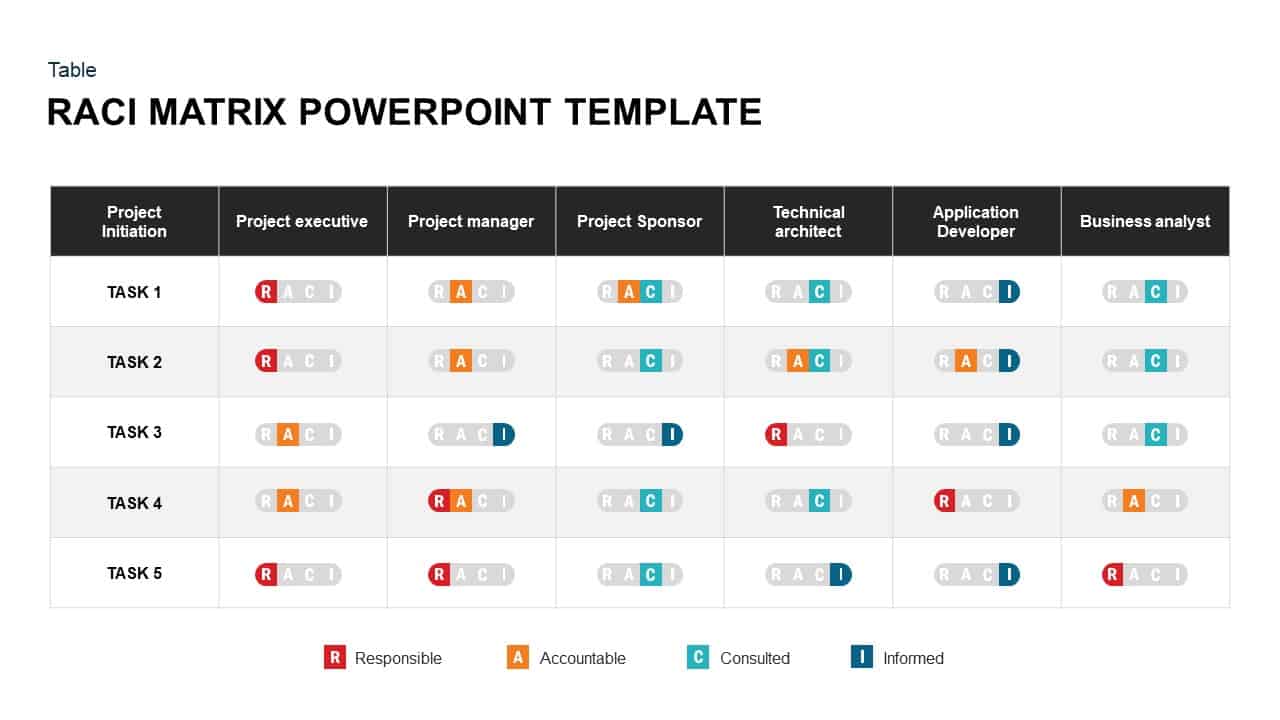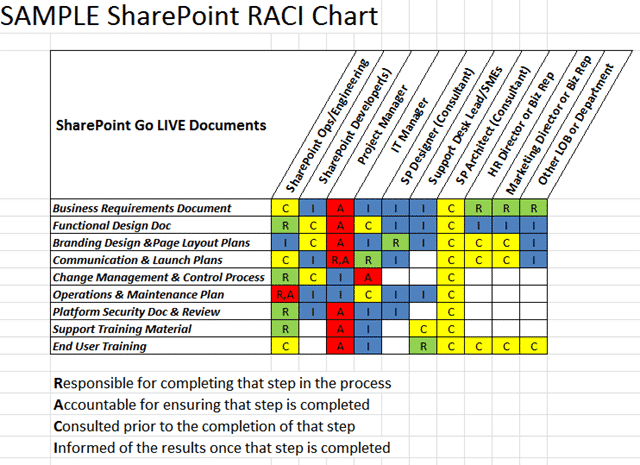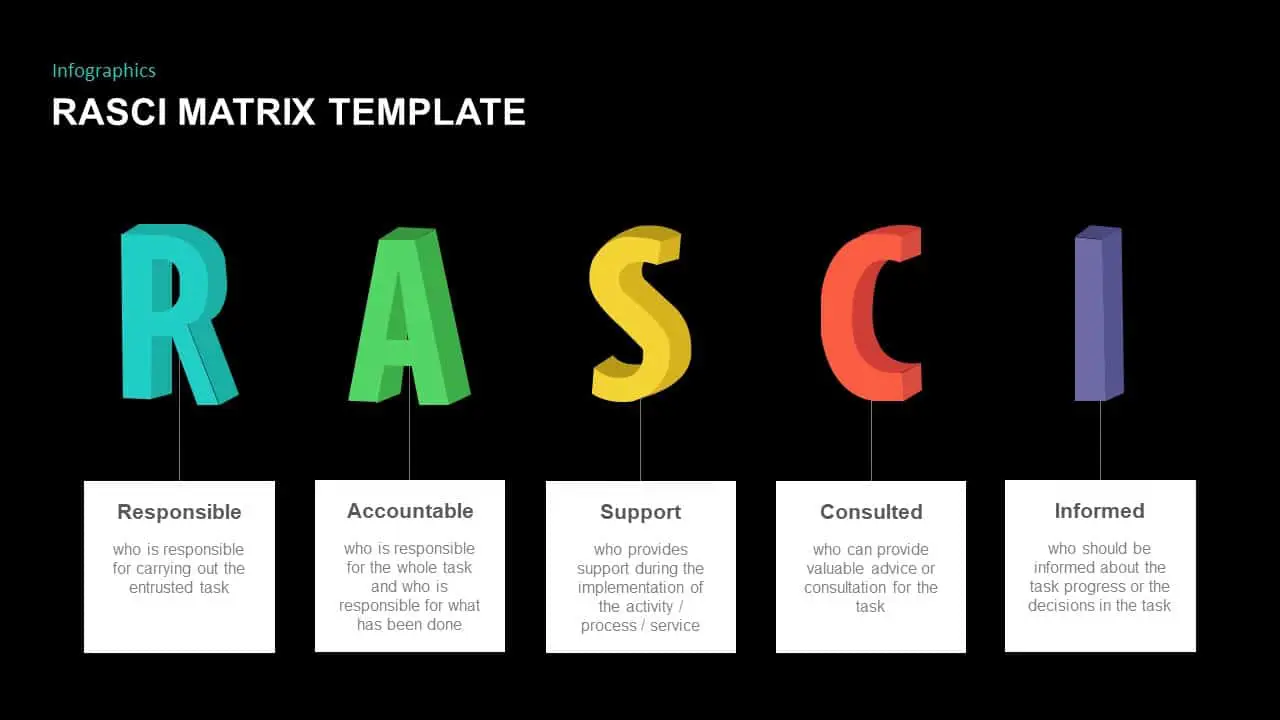Basics of RACI/RASCI Matrix with Template

Management professionals have excellent knowledge of project development. It is the application of methods, processes, skills, knowledge, and experience to achieve specific project objectives according to the project criteria within the agreed parameters. To achieve project goals, there is a different set of programs that have been developed. In any project, there is a wide range of stakeholders with varying needs. The RASCI framework is a useful reference to clarify at the start of every project or program stage. RASCI model focused on the question, “who is responsible for what”, at a certain extent, it tries to give clarifications on this ground. It is all about responsibility and accountability. RASI framework is very important for stakeholders to understand their responsibilities and accountabilities of each person.
RASCI describes the participation by various roles in completing action steps or deliverables for a project or business process. It is also useful in clarifying roles and responsibilities in cross-functional or departmental projects and processes.
When Should I Use A RASCI Chart?
Is a RASCI chart useful across all projects? The short answer is no. Pitching in too much complexity and process to some small and fast-moving projects can actually slow things down and create blockers. So if your project team is small, roles are already very evidently defined, or a similar structure has been used successfully previously, then consider just assigning tasks to people. You don’t necessarily need to define everyone’s participation in every deliverable.
However, on bigger projects with numerous stakeholders, not using a RASCI and clearly defining responsibility upfront can lead to problems further down the line, when people ask why they weren’t involved, or you find out there’s another layer of endorsement needed. It’s a great way to help avoid unforeseen surprises and too much involvement from stakeholders along the course of the project, slowing down decisions and work, and the project as a whole. Primarily, if there is any confusion or questions around who is doing or involved in what, use a RACI to agree on roles and responsibilities upfront.
• Responsible: persons who do the work to realize the action step. There is typically one role with the participation of responsible, although others can be delegated to assist in the work required. They are the creator of the deliverable.
• Accountable: those who are finally accountable for the correct and systematic completion of the deliverable or action step, and the one to whom the responsible one is accountable. In other words, an accountable must sign or approve on work that responsible provides. There must be only one accountable specified for each action step or deliverable. This is the person accountable for the job in hand who will give approval.
• Supportive: Those who can deliver principals or play a supporting role in implementation. his is someone who can provide resources, information or will generally support you in getting the work done.
• Consulted: Those whose ideas are patterned; and with whom there is two-way communication.
• Informed: Those who have had a report on progress, often only on the conclusion of the action step or deliverable; and with whom there is just one-way communication.
Most often, RACI and RASCI models are used as roles and responsibilities matrix. They make clear the relationship between tasks and people on projects. Often at times, people don’t know what they are supposed to do. RASCI is a chart that sets it out clearly defines what you are expecting them on the project.
RASCI matrix is also useful for communication plans because it can give you ideas about which stakeholders require which type of communications at what points. It can direct which decisions are going to be implemented by consensus which is also helpful to recognize early. You can map your process using the RASCI chart. If you are willing to change a process you can use this model to step through the process and record who is going to be affected by any process change. The problem is that your chart isn’t much help unless you keep it live and up-to-date as people do change roles and move into different responsibilities positions during a project.
Why do you keep a RASCI chart?
When you don’t record who is responsible for what, you risk:
• The decision-making process and its implementations will take much more time because no one is clear who will be having the final say.
• The entire team blame when things go wrong.
• Work overload will come because you haven’t balanced the work properly.
• Laziness and inactivity will take place; when people aren’t sure if they should do something they normally do nothing.
How to create a RASCI chart
You can design a RASCI matrix by combining two breakdown structures: with work breakdown structure and organizational breakdown structure. Further, the work breakdown structure could be replaced with a product breakdown structure, if you required it. A tabular model is good for documenting the roles and responsibilities of your stakeholders and it’s quite easy to knock up a RASCI template to use time and time again. If you feel difficulties to design a chart, you can scratch it from slide bazaar gallery or you can download the original PowerPoint RASCI template from the library. While creating a RASCI matrix, you can follow the below-mentioned information.

1. Identify the work roles and use work breakdown structure
2. Find the people including customers and suppliers. Use roles instead of names on the chart. However, you can use the names where it is only one person.
3. Populate your RASCI template with roles/names and tasks.
4. Mark the people who are Responsible first.
5. Now add the Accountable.
6. Now add the Consulted, Informed, and Supportive. Do this as a team if necessary but it’s easier to start with a draft than a blank table.
7. Hand out the RASCI chart.
8. Make changes based on feedback.
9. Sign it off as complete.
10. Don’t forget to review it every now and then to check that nothing has altered.
Checking Your RACI Matrix
Once your RASCI matrix is complete it pays to spend a few minutes checking what you’ve done. Look for:
• People with no unfilled places: they have too much work assigned to them.
• People with a lot of ‘A’s: can you push their power further down the organization?
• People with too many ‘R’s: they are responsible for a lot of deliverables. Check their work balance.
• Also, check the tasks.
• Jobs that have lots of ‘R’s: are there too many people involved in this to get the work done on time?
• Tasks that have lots of ‘C’s: too many people being consulted are going to slow the work down.
• Tasks that have lots of ‘I’s: can you make a law that says people are only informed by exception i.e. when they need to know that something diverges from the plan? This will save you time communicating when everything is going as anticipated.
Lastly, check for blank spaces. Every assignment should have a Responsible and Accountable person. You don’t necessarily need to have people being Supportive, Consulted and Informed for every task but if you have a lot of gaps here then it could be a sign that you’ve missed some stakeholders.
Essential things to be remembered, while making a RASCI matrix.

• Ensure a RASCI is going to be helpful for the project, think about how the RASCI will be used and why.
• Pick your model, and make sure you know the terms. Make sure you have a description for these terms to hand as you work through, or to share together with the chart.
• Make sure that only one role should be marked as Accountable, and not a full group to make sure that a sole person is an owner rather than multiple people who can lead to misperception and slower decision making.
• Informed isn’t necessarily everyone on the project, it’s those that the task or deliverable will have an impact on or those with a vested interest.
• Even if you create the draft of the RASCI, don’t do it alone. Get core project stakeholders to feed in.
The RASCI model – is an excellent project management tool that illustrates the type of input each stakeholder or group of stakeholders is going to have. But alone it isn’t enough. You have to involve stakeholders beyond the network for the project to be a success.
Though, RASCI provides you with a starting point in identifying and categorizing stakeholders, so you can then appropriately engage and work with them.
Download Project Management PowerPoint Presentation to convince the benefits of different project management strategies. You can use differently created project management tools and techniques to enhance your team’s productivity. There isn’t a huge amount of variance between the models in terms of what they are trying to achieve, so frequently you can just review the types and then pick which you prefer or which suits the project best.

